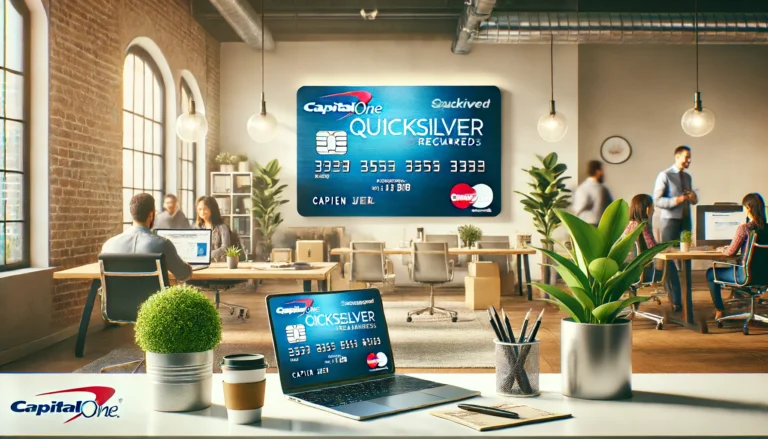Chase First Banking Review: The Debit Card for Kids

Empowering young minds with financial skills and responsibility
Chase First Banking offers a unique solution with a debit card specifically designed for kids aged 6 to 17. This account provides a hands-on approach for children to learn about saving, budgeting, and spending, all under the watchful eye of their parents.
Introduction to Chase First Banking
Many financial habits are formed during childhood. Understanding how to save, budget, and manage money is essential for building a strong financial foundation. Chase First Banking aims to teach these skills through a practical, interactive approach. According to Policygenius, nearly 63% of parents actively teach their children about allowances, budgeting, and the importance of bank accounts.
The Chase First BankingSM account offers a debit card for kids aged 6–17, helping them develop financial literacy while parents maintain control and oversight.
Chase First Banking Overview
Account Details
| Feature | Details |
|---|---|
| Monthly Maintenance Fee | $0 |
| Minimum Deposit to Open | $0 |
| Minimum Balance | $0 |
| Annual Percentage Yield (APY) | N/A |
| Free ATM Network | 16,000 Chase ATMs |
| ATM Fee Reimbursement | None |
| Overdraft Fee | $0 |
| Mobile Check Deposit | Yes |
Pros and Cons
Pros
- No monthly service fee: A cost-effective way to introduce kids to banking.
- No minimum deposit to open an account: Easy for any family to get started.
- Access to 16,000 Chase ATMs: Convenient access to funds.
- Top-rated mobile app: User-friendly interface for both parents and children.
- No overdraft fees: Financial mistakes won’t result in extra charges.
Cons
- No APY: Deposits do not earn interest.
- $100 ATM limit: Daily withdrawal limit might be restrictive.
- Requirement to be an existing Chase customer: Limits accessibility to Chase account holders.
Features and Benefits
Financial Education and Control
The Chase First BankingSM account is linked to a parent’s existing Chase checking account. This setup allows parents to monitor and control their child’s spending and savings activities through the Chase mobile app.
Spending Limits and Alerts
Parents can set specific spending limits for various categories, such as:
- $25 on restaurants
- $40 on shopping
These limits help children understand budgeting while preventing overspending. Additionally, parents receive alerts for each transaction, ensuring they stay informed about their child’s spending habits.
Savings Goals
Kids can use the app to set and track savings goals. Although the account doesn’t earn interest, it encourages the habit of saving. For those looking for interest-earning options, high-yield savings accounts, like Ally Bank’s 4.20% APY savings account, might be a better alternative.
Ease of Money Management
Parents can easily transfer money into their child’s account for allowances or rewards for completed chores. The app supports both one-time and recurring transfers, making it simple to manage regular allowances.
No Direct Deposits or Peer-to-Peer Transactions
The account does not support direct deposits or peer-to-peer transactions via services like Zelle, Venmo, PayPal, or Cash App. This limitation ensures that funds are used under the parental guidance system.
Fees
The Chase First BankingSM account has no monthly service fees and no overdraft fees. However, using non-Chase ATMs can incur charges:
- $3.00 for inquiries, transfers, and withdrawals within the U.S.
- $5.00 for withdrawals outside the U.S.
Parental Control and Financial Independence
Transfer Limits and Withdrawal Restrictions
Parents can set withdrawal limits, with a daily cap of $100. This feature ensures that children learn to manage their cash withdrawals responsibly.
Mobile App Functionality
The Chase mobile app allows parents to approve or deny requests for additional funds, providing an extra layer of control over their child’s spending.
Encouraging Financial Responsibility
By giving children their own debit card and the ability to manage their funds through a dedicated app, Chase First Banking fosters a sense of financial independence. Kids can learn essential money management skills in a controlled environment.
Bottom Line
The Chase First BankingSM account is a practical, low-stress way to introduce children to financial management. It offers flexibility through its mobile app, allowing parents to oversee their child’s spending and savings activities while providing a hands-on financial education experience.
Comparison with Other Accounts
For college-aged children or those seeking interest-earning accounts, options like Discover® Cashback Debit Checking or Ally Bank’s high-yield savings account might be more suitable. These accounts offer features such as no monthly maintenance fees, interest earnings, and more extensive transaction capabilities.
FAQs
What is Chase First Banking?
Chase First Banking is a debit card account for kids aged 6-17, managed through a parent’s existing Chase checking account. It provides tools for parents to teach their children about money management, including spending limits and savings goals.
Is there an age requirement for Chase First Banking?
Yes, Chase First Banking is designed for children aged 6-17.
Does Chase First Banking allow direct deposit?
No, the account does not support direct deposits. For teens aged 13-17, Chase High School Checking offers direct deposit options.
Do I need to be a Chase customer to open a Chase First Banking account?
Yes, you must have a qualifying Chase checking account to open a Chase First Banking account.
Does Chase First Banking support peer-to-peer transactions?
No, the account does not support peer-to-peer transactions or services like Zelle, Venmo, PayPal, or Cash App.
Conclusion
Chase First BankingSM offers a robust platform for children to learn essential financial skills under the supervision of their parents. While it comes with some limitations, such as the lack of direct deposit and peer-to-peer transaction capabilities, its strong parental controls and educational tools make it an excellent choice for families looking to start their children on the path to financial literacy.





